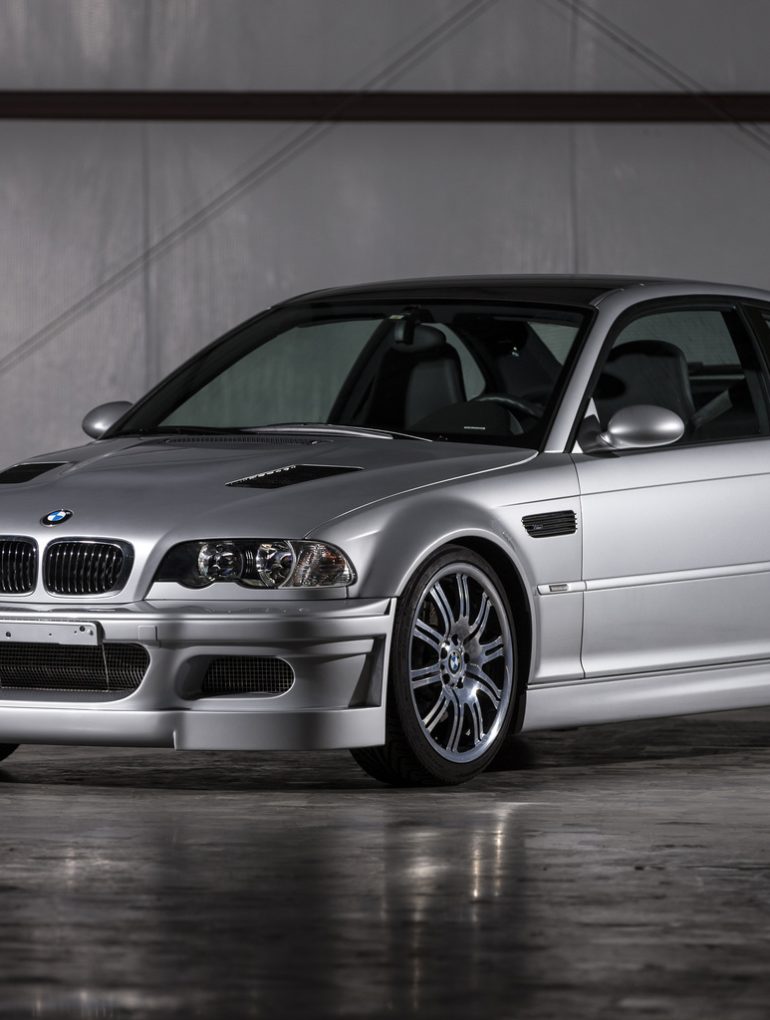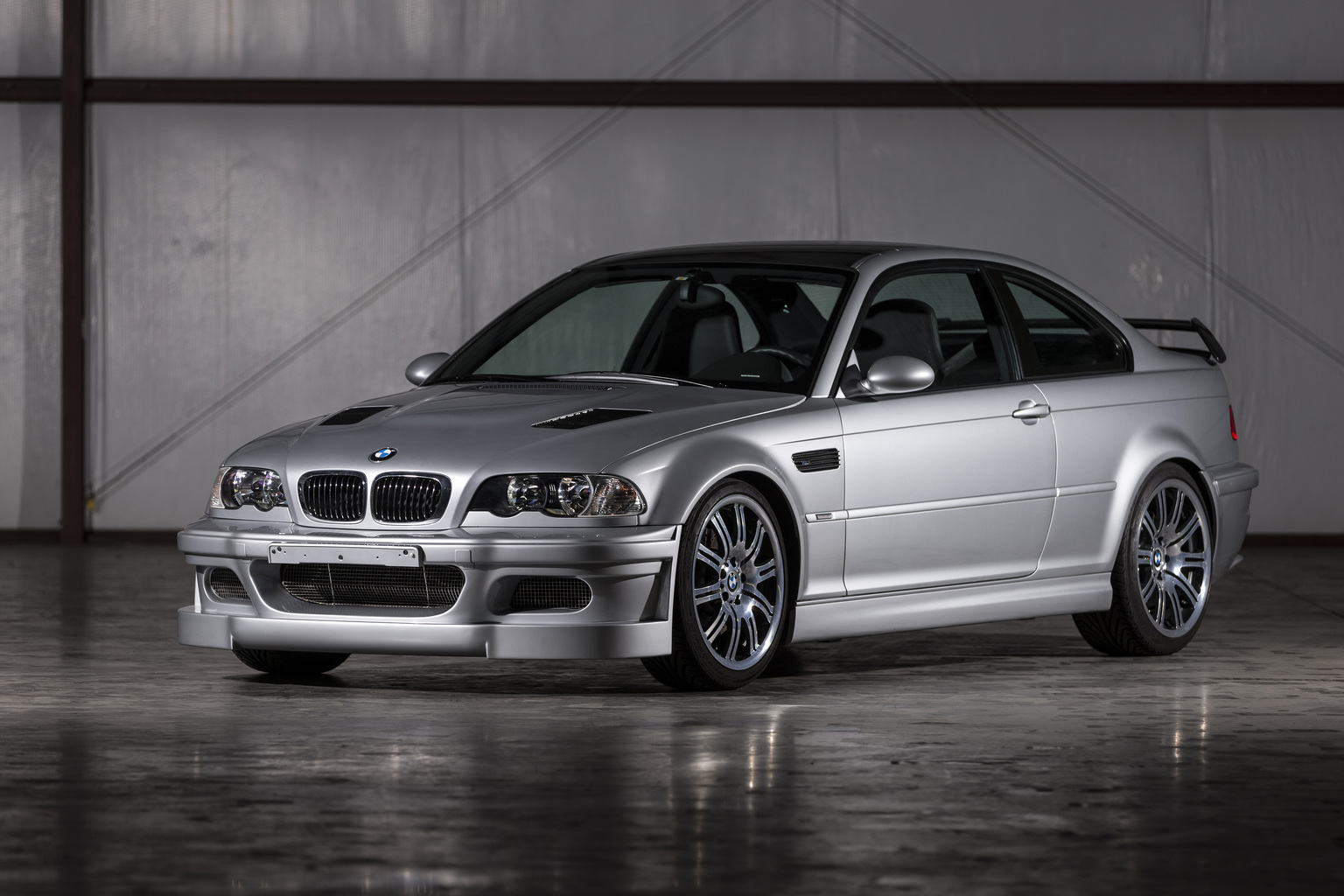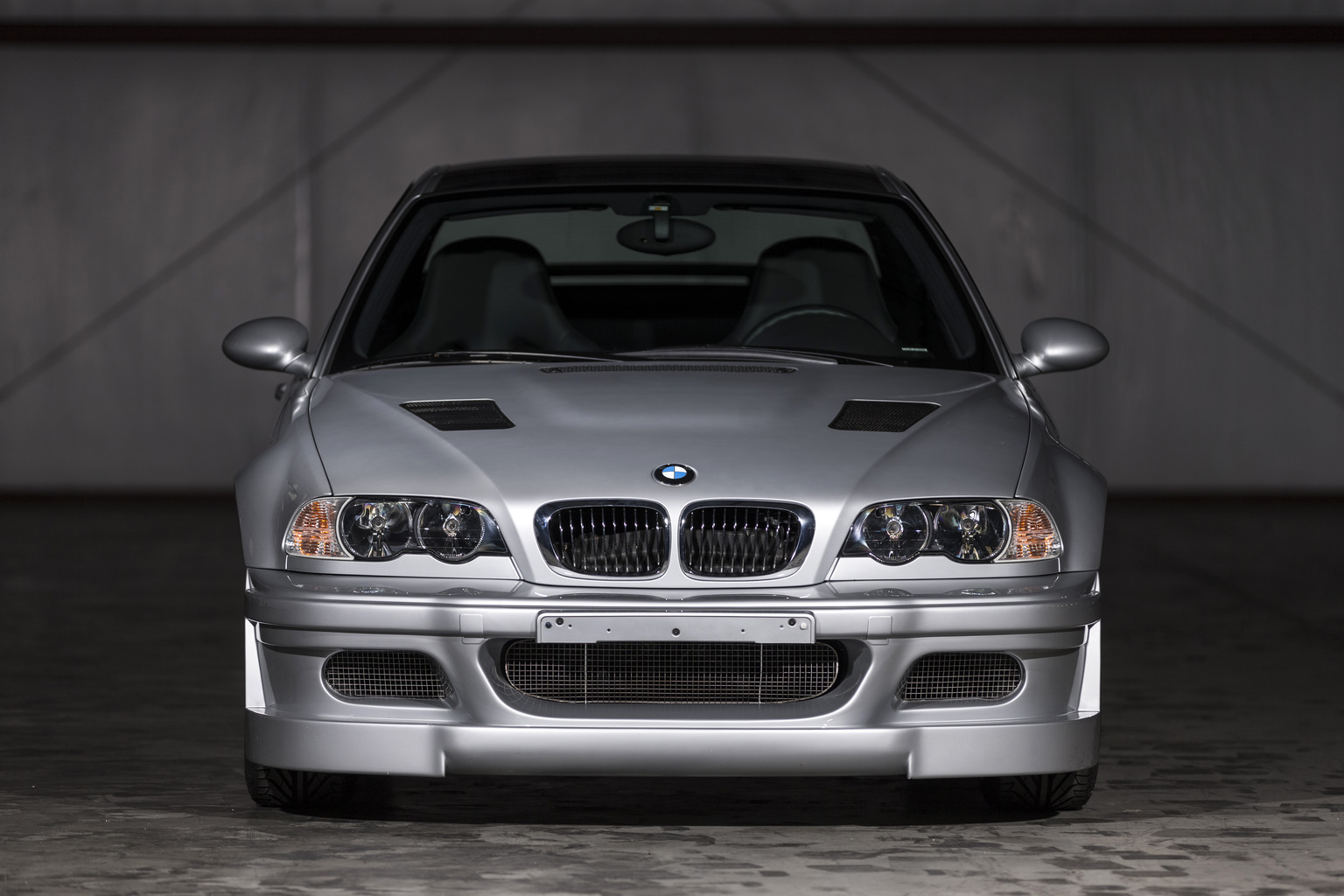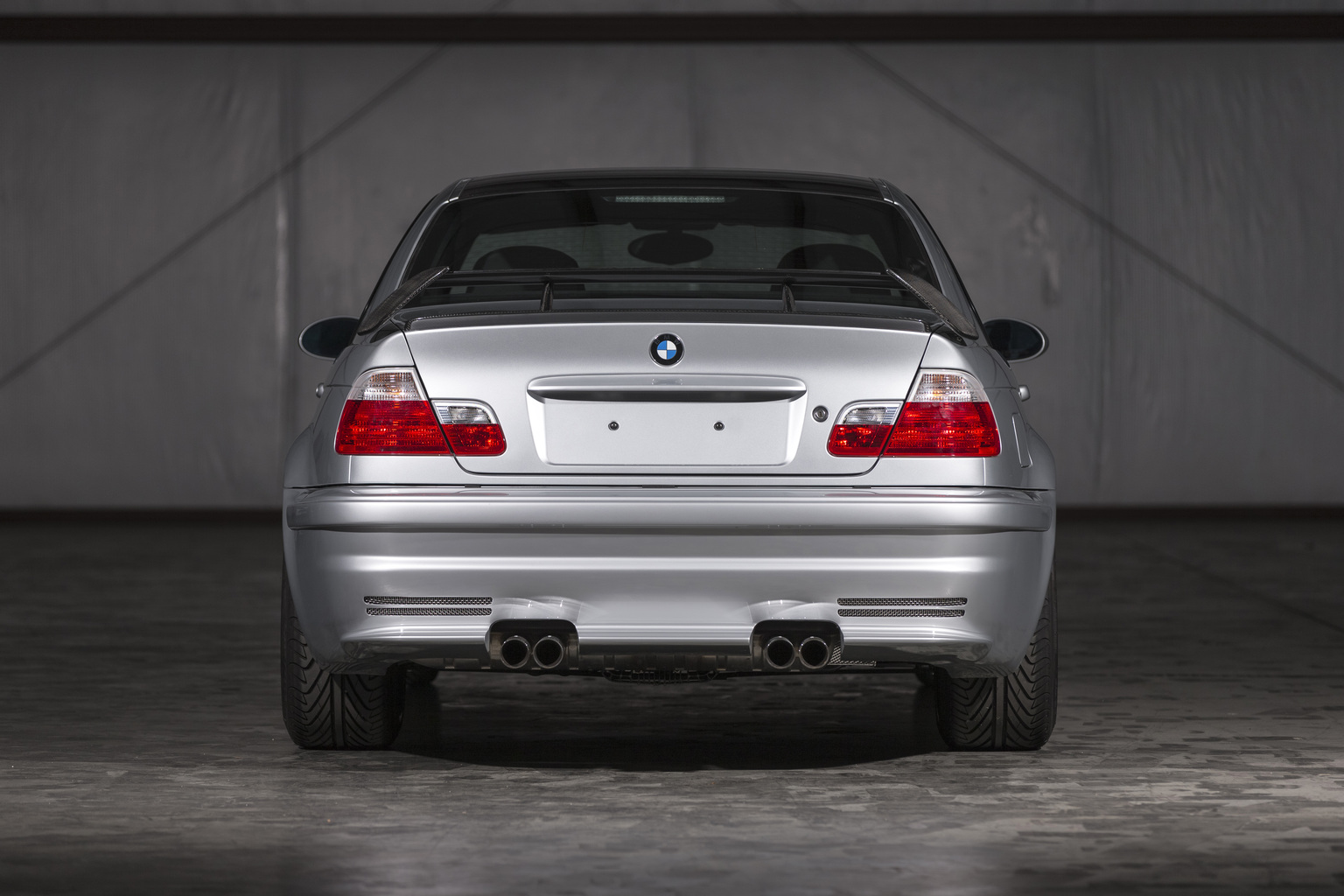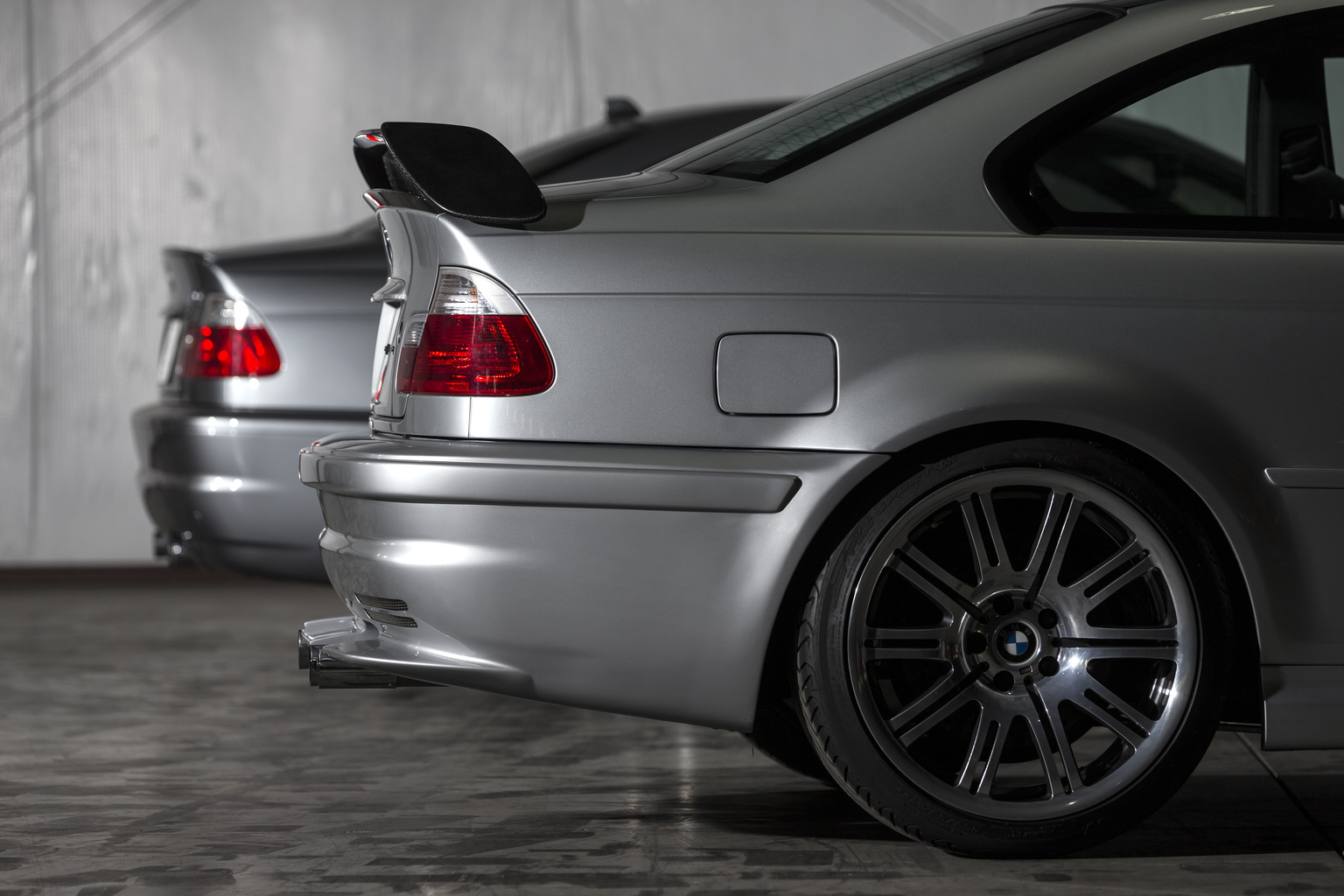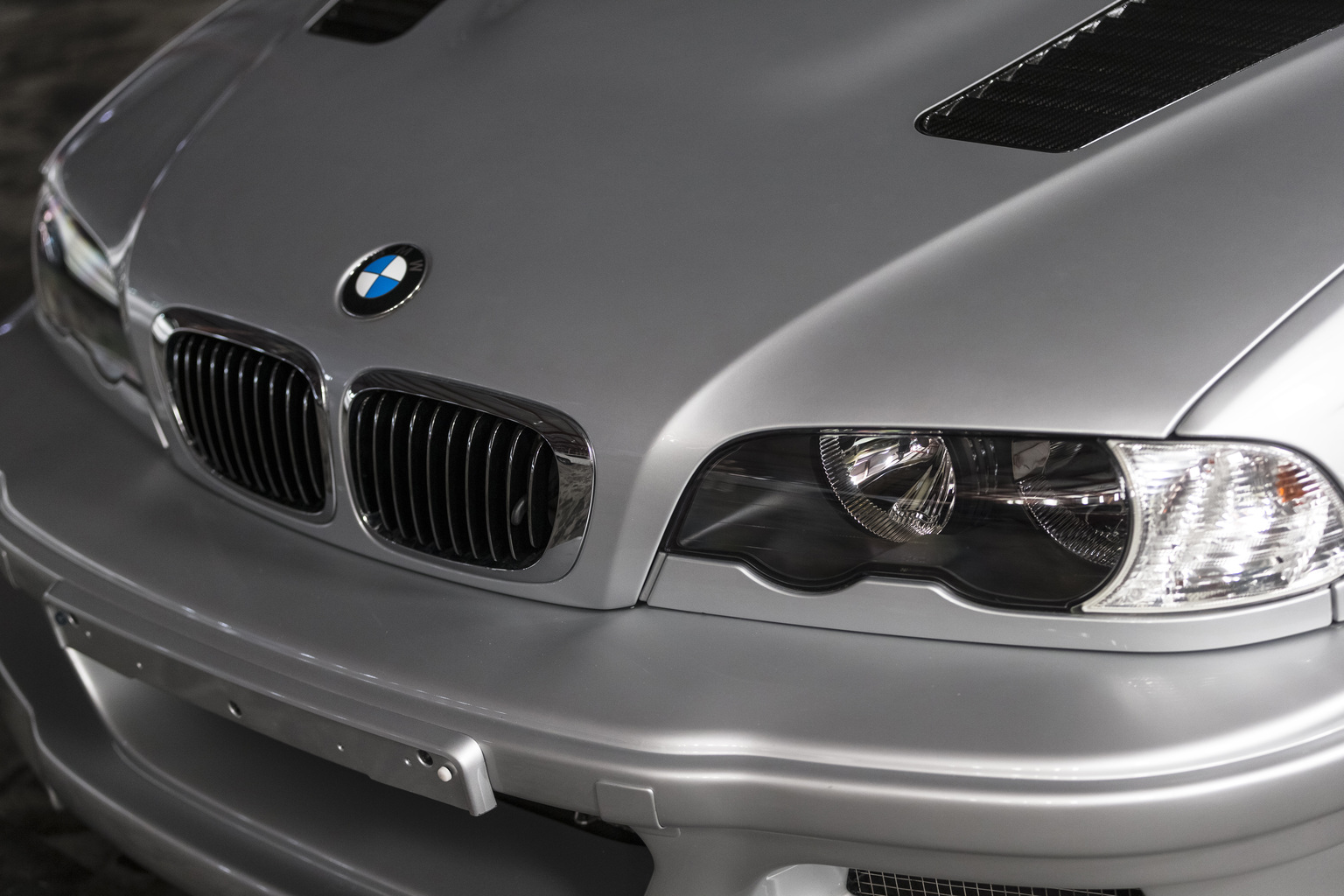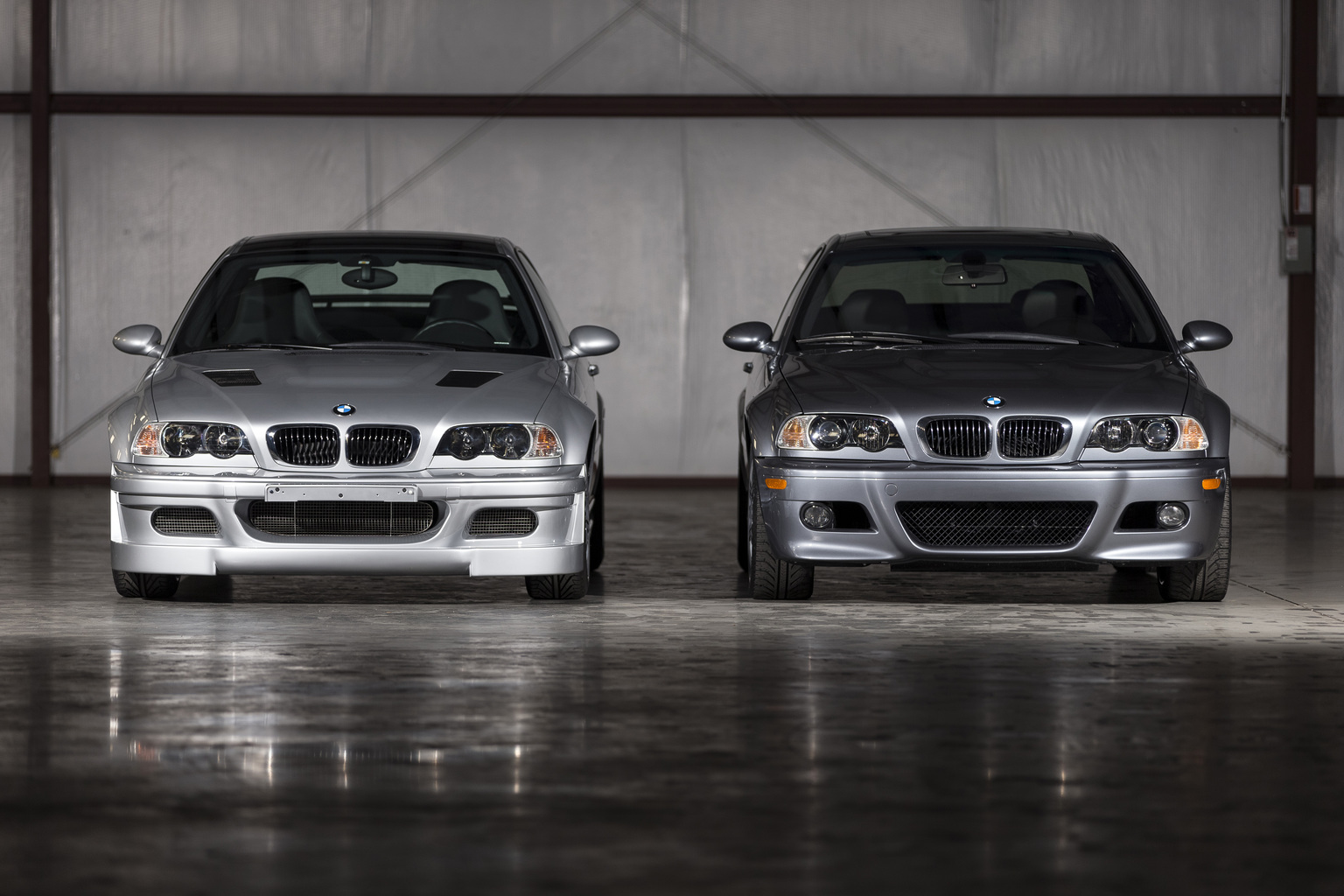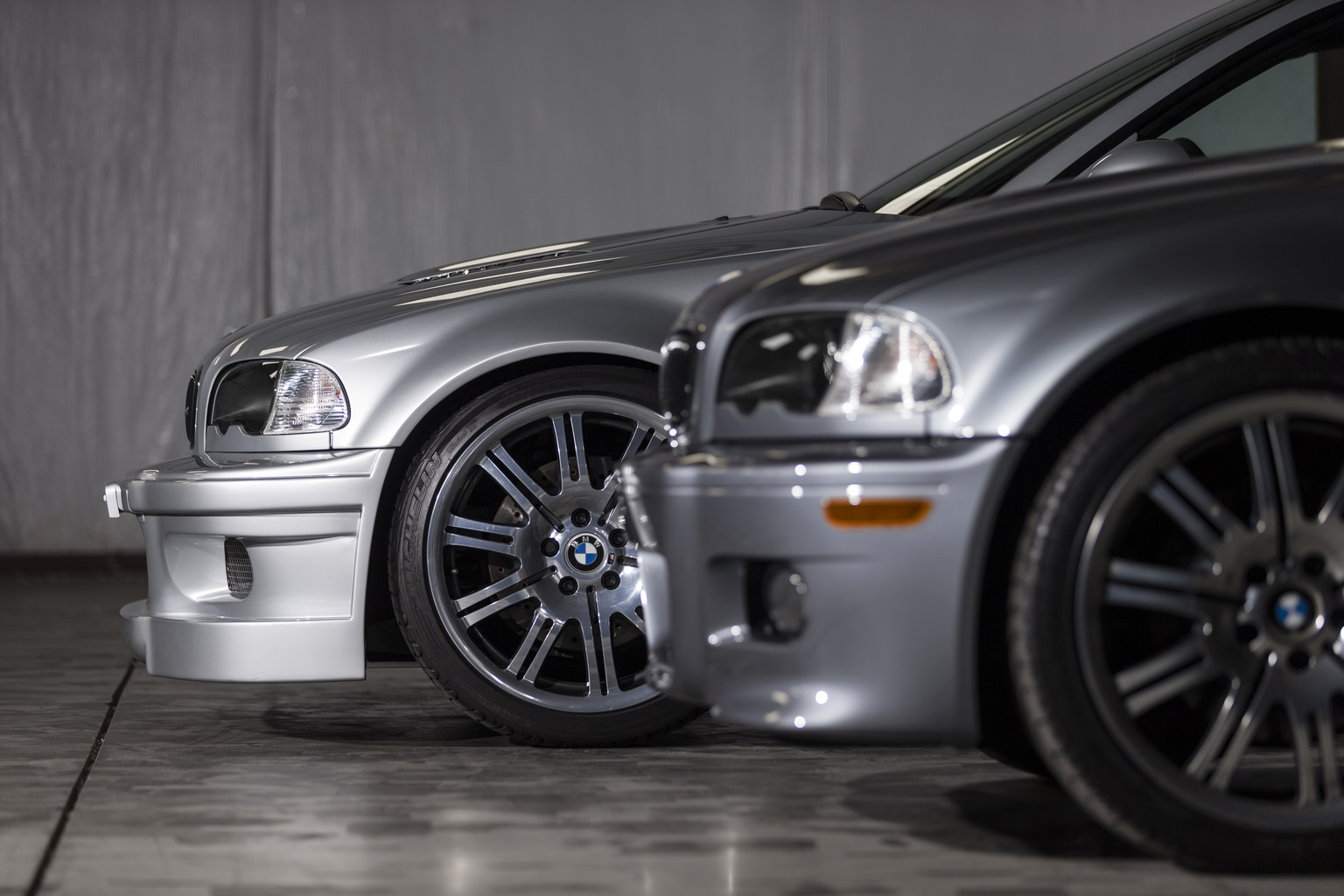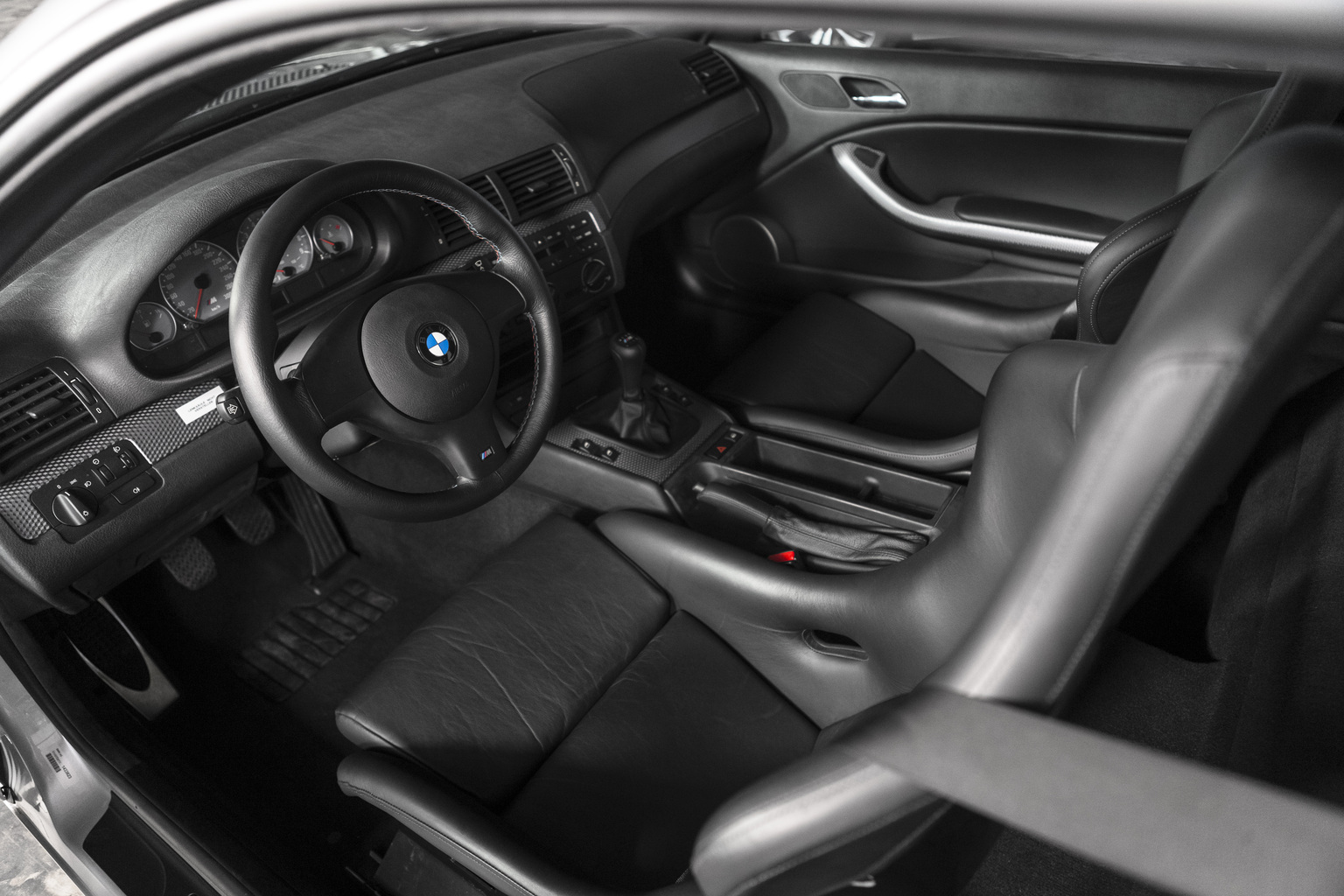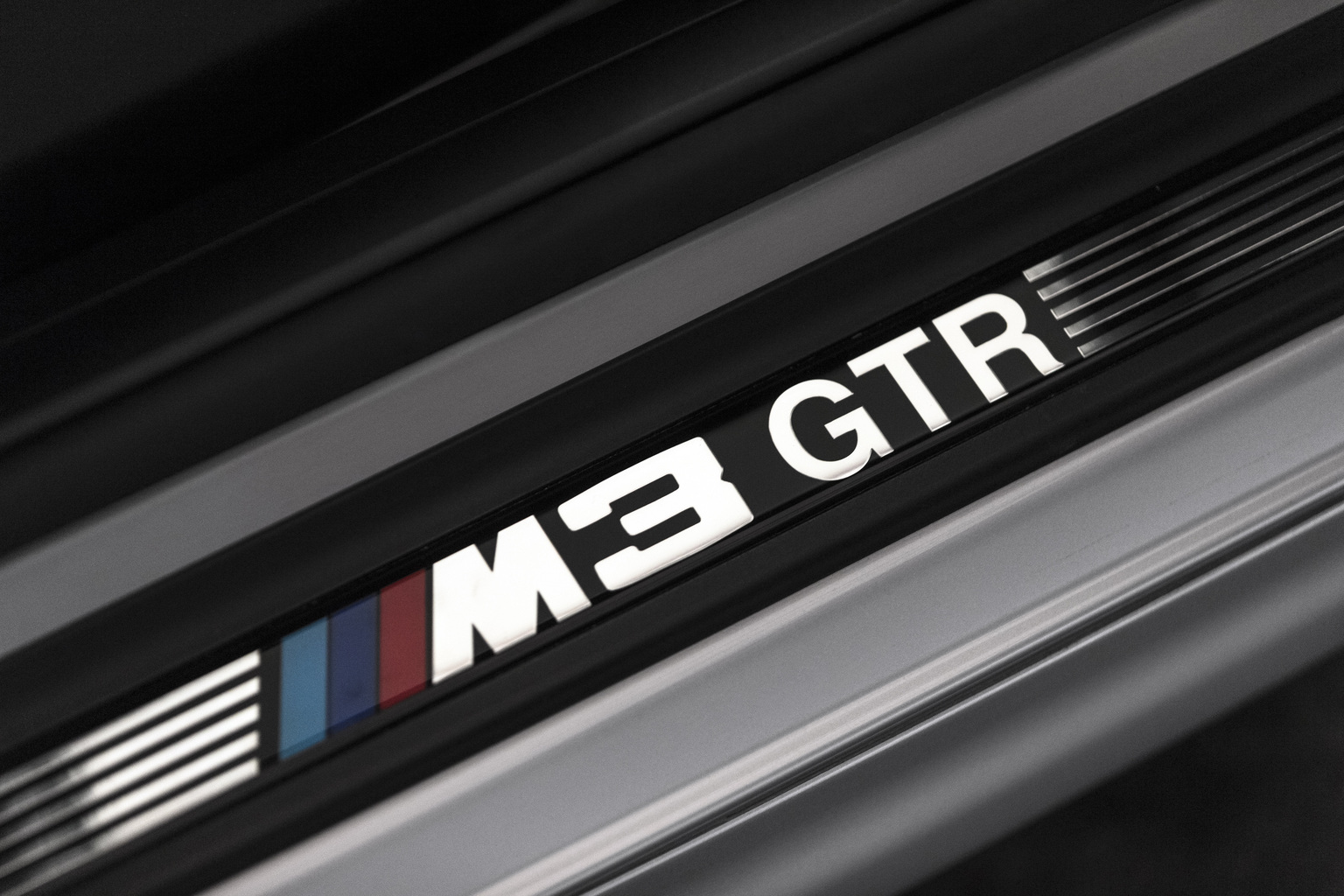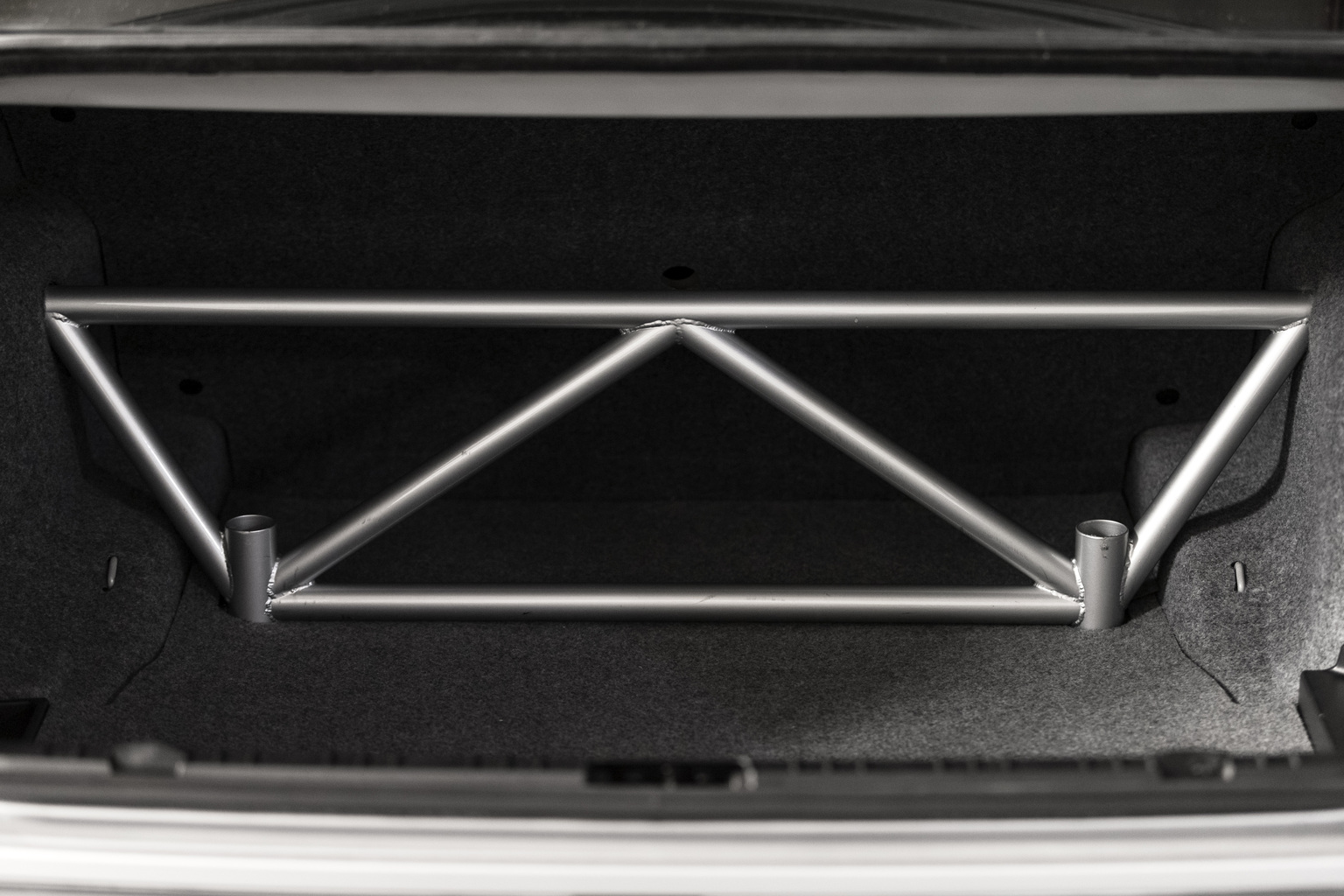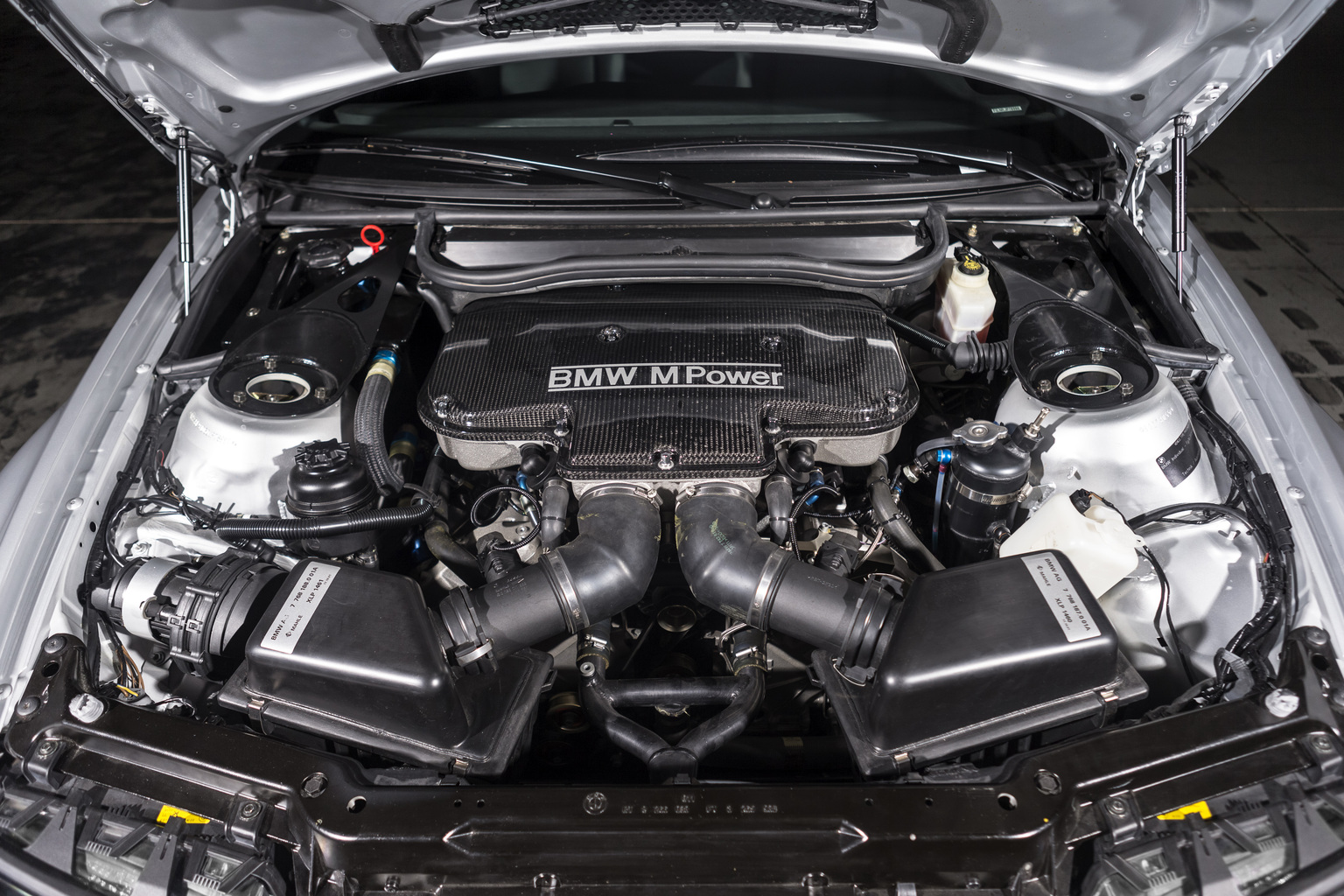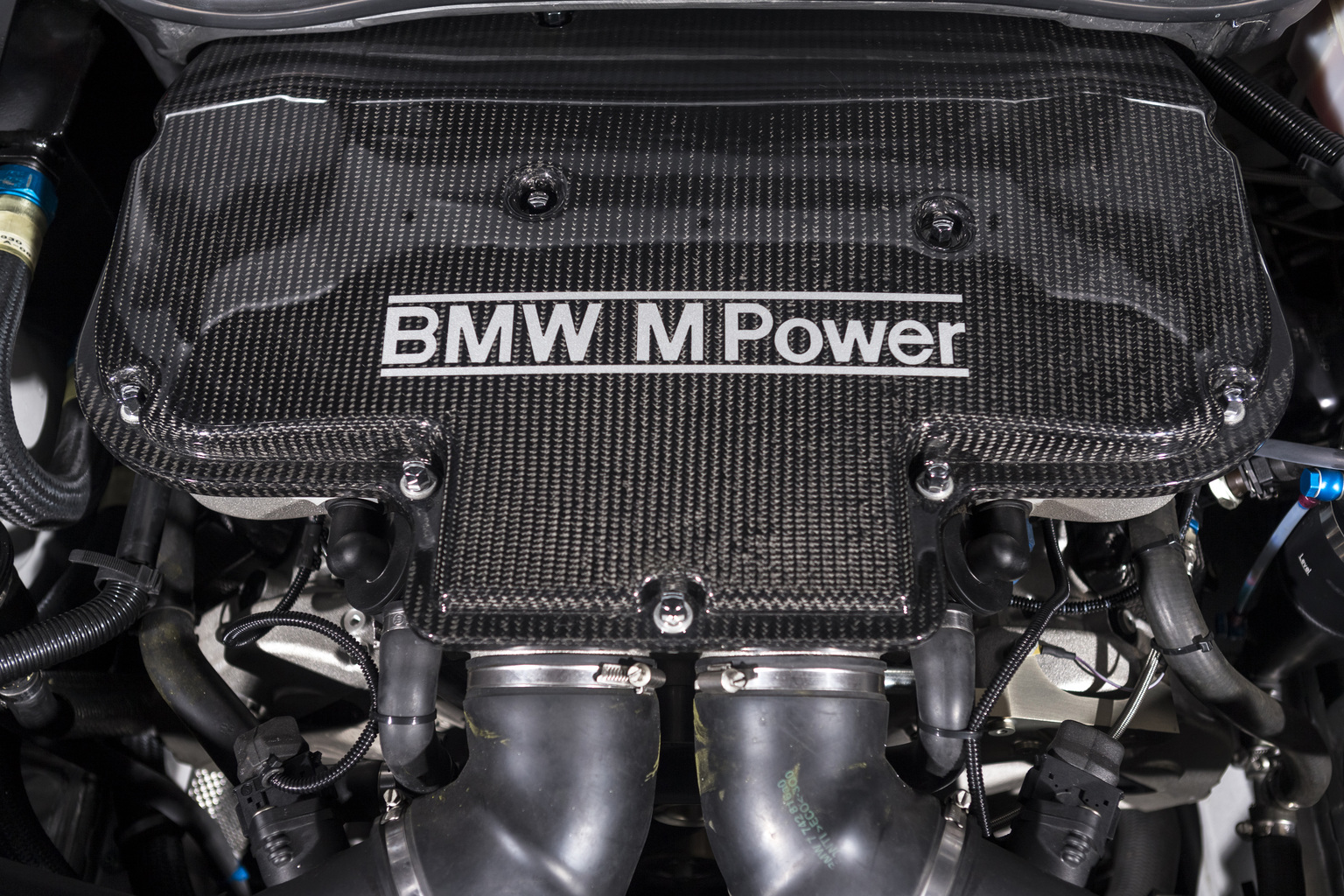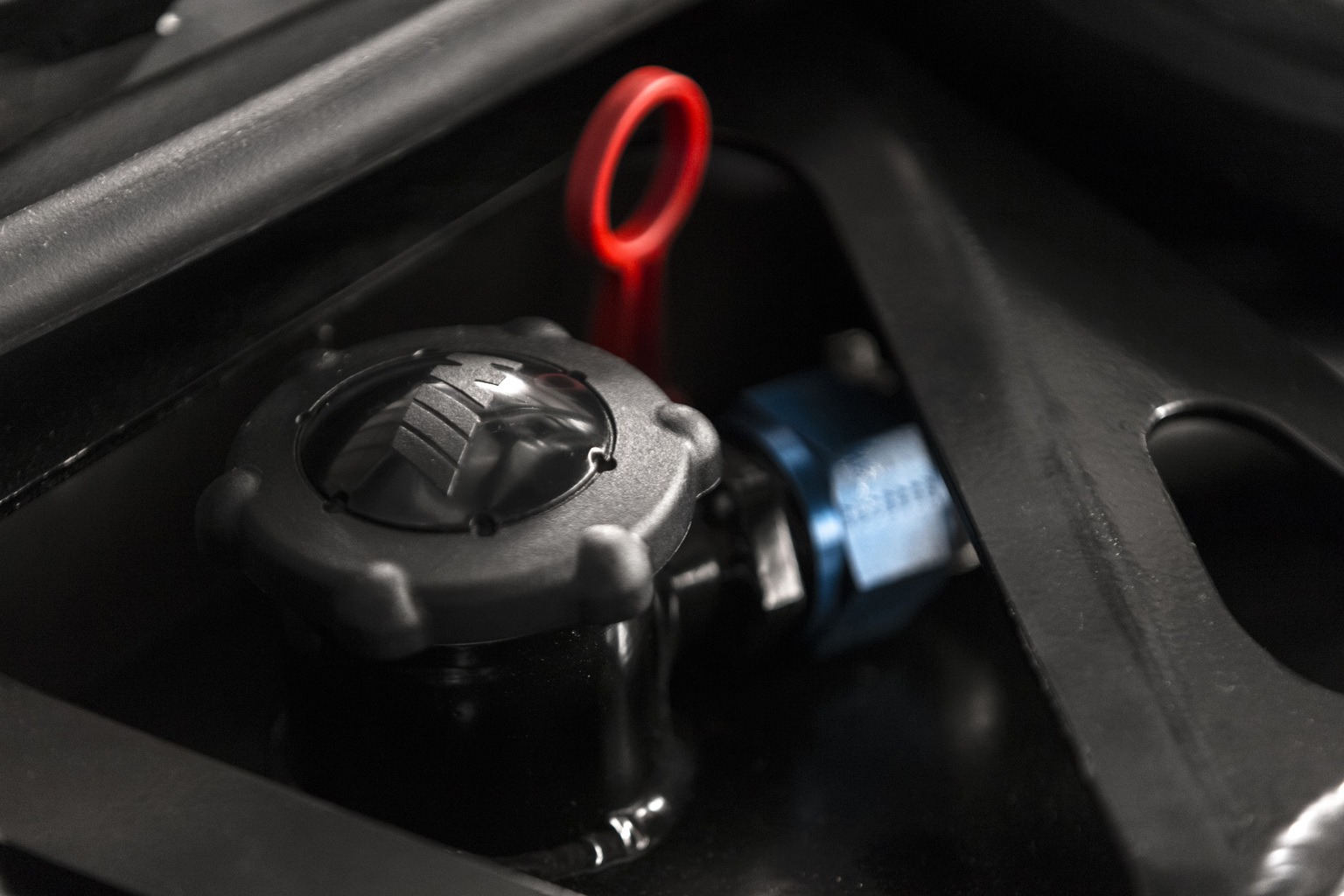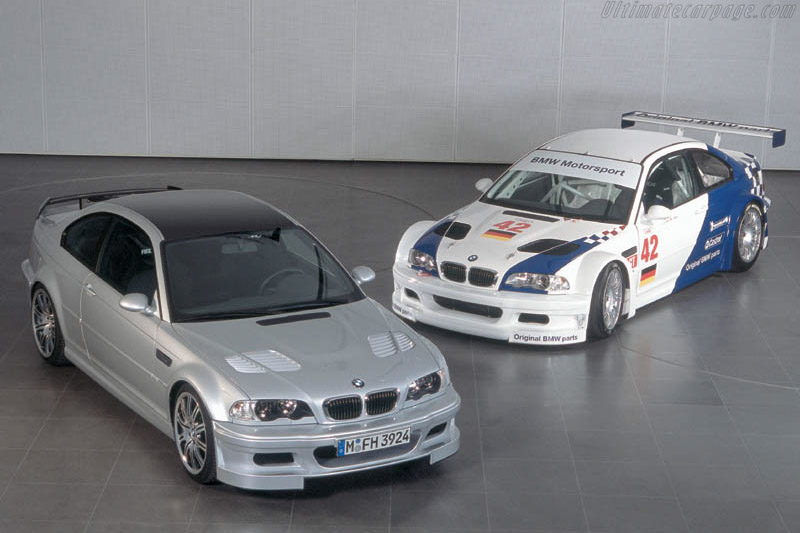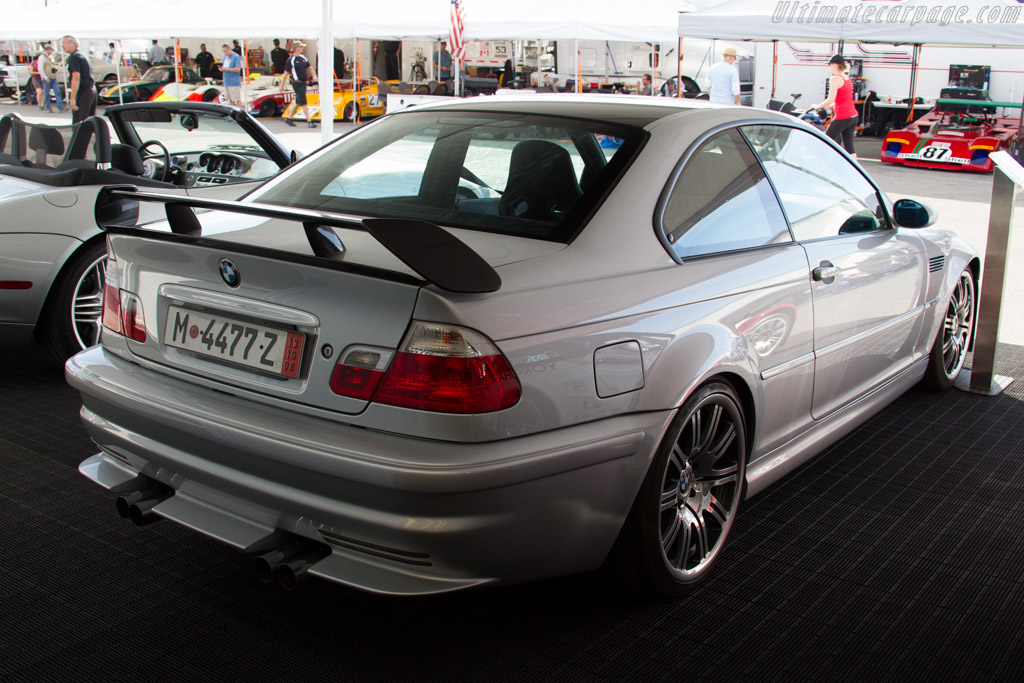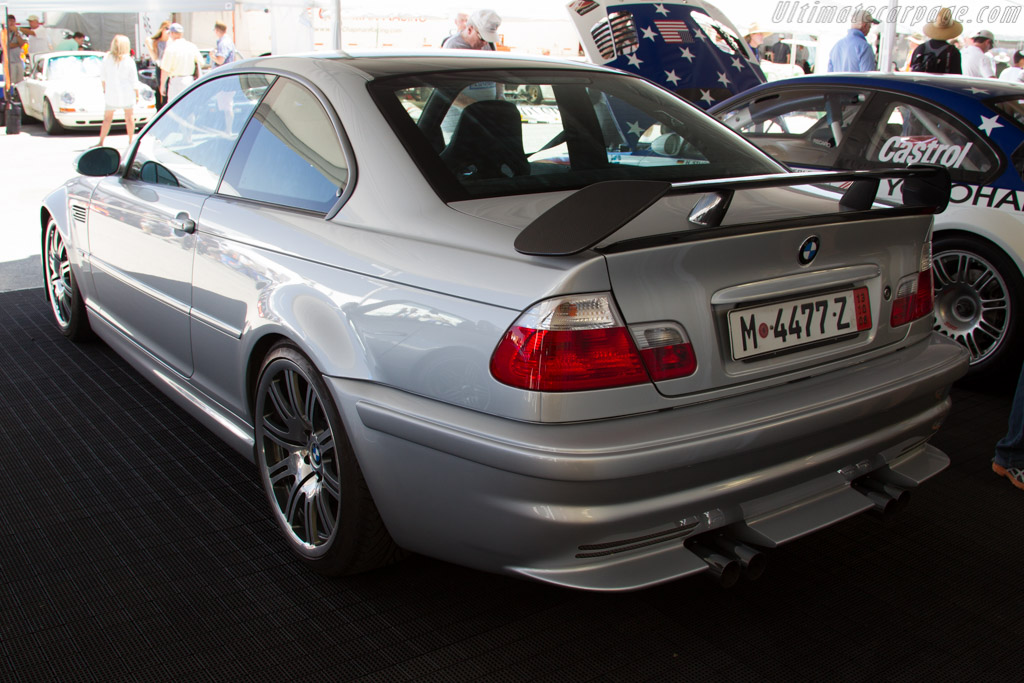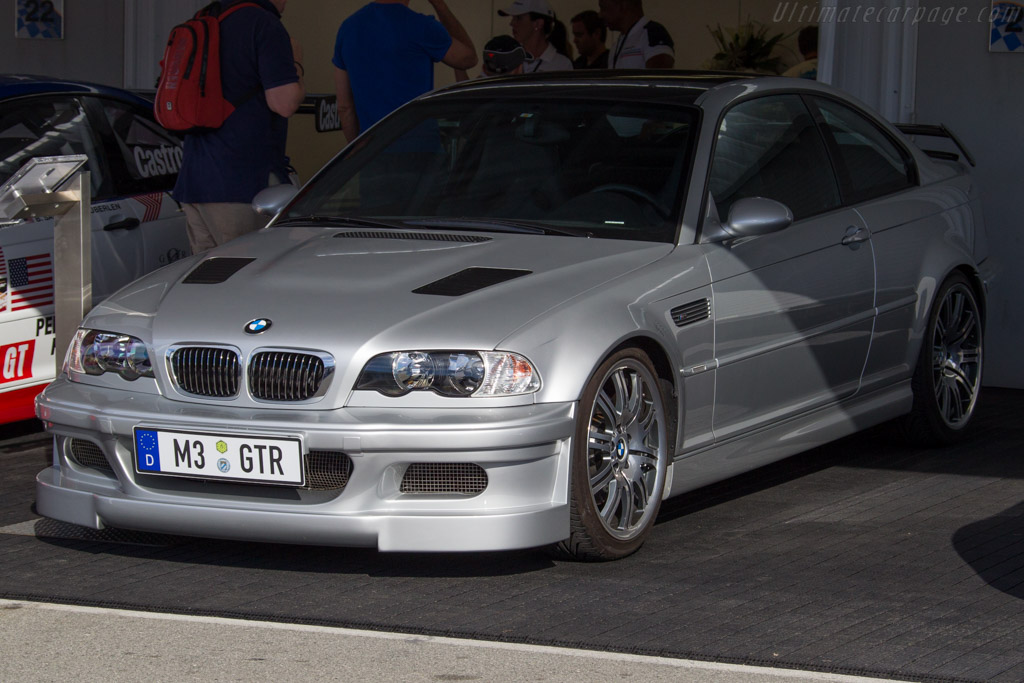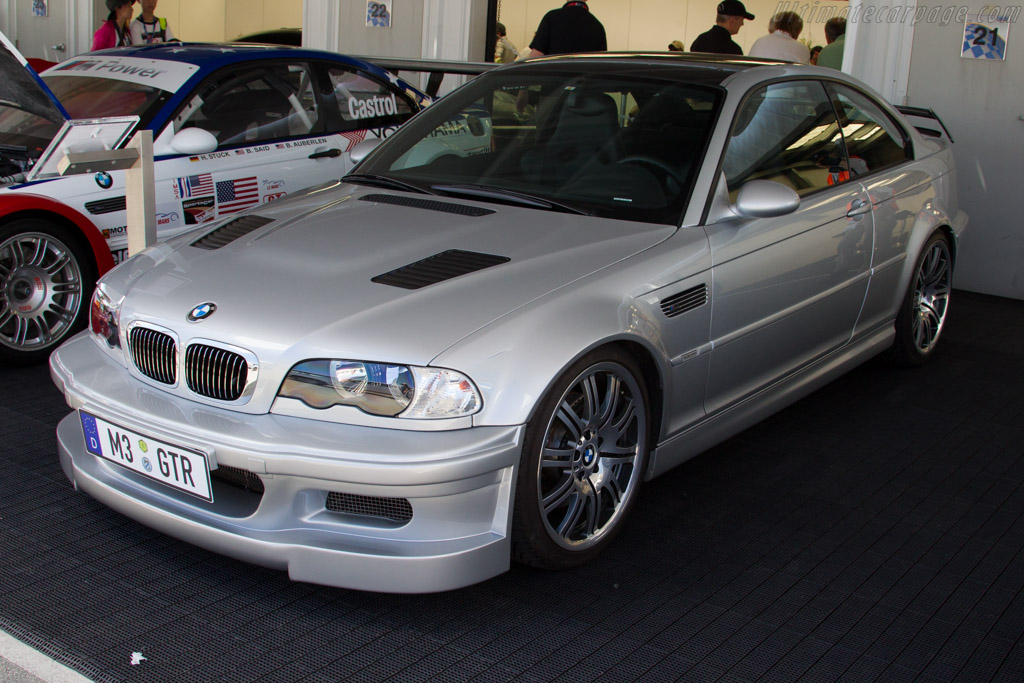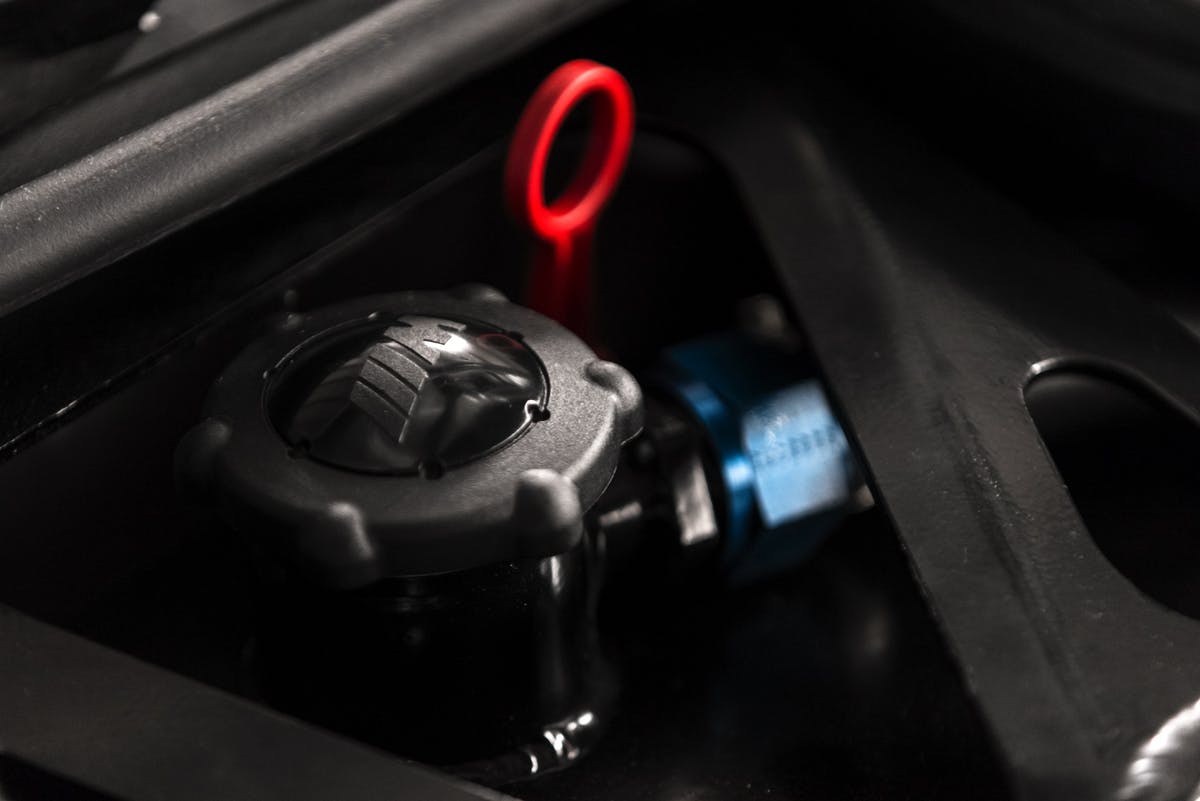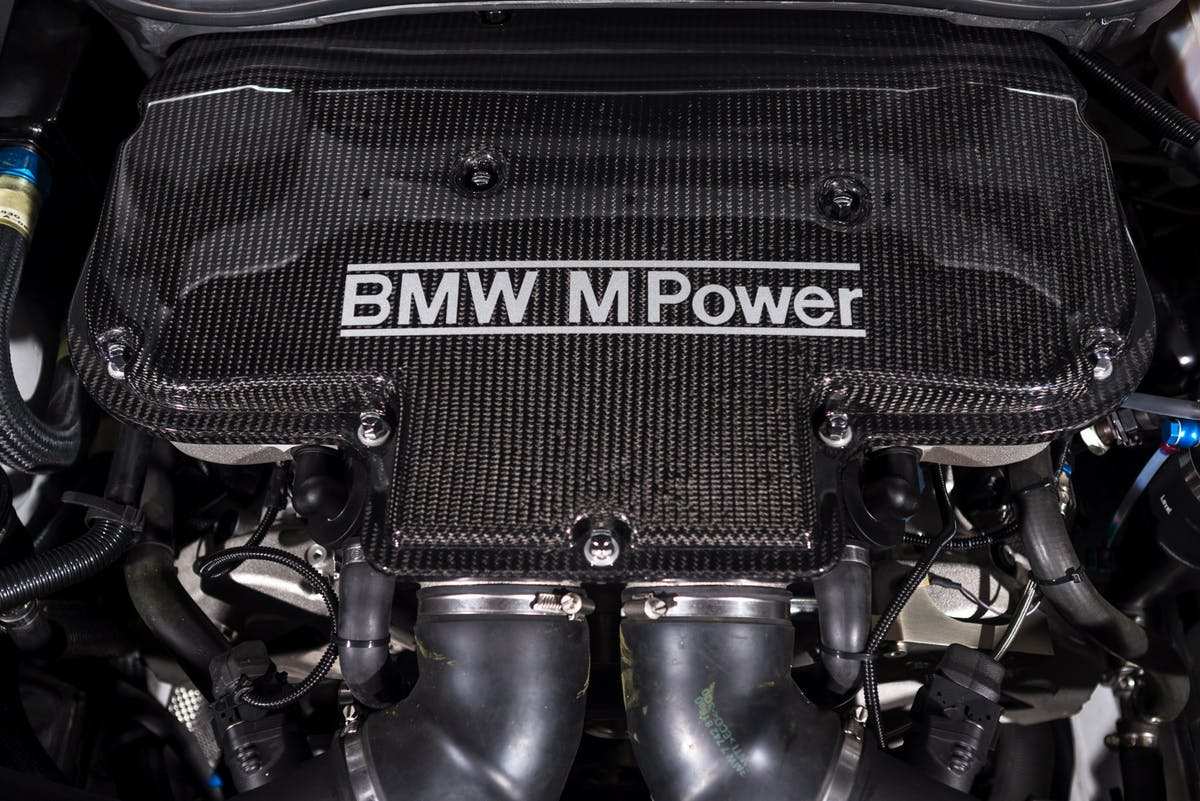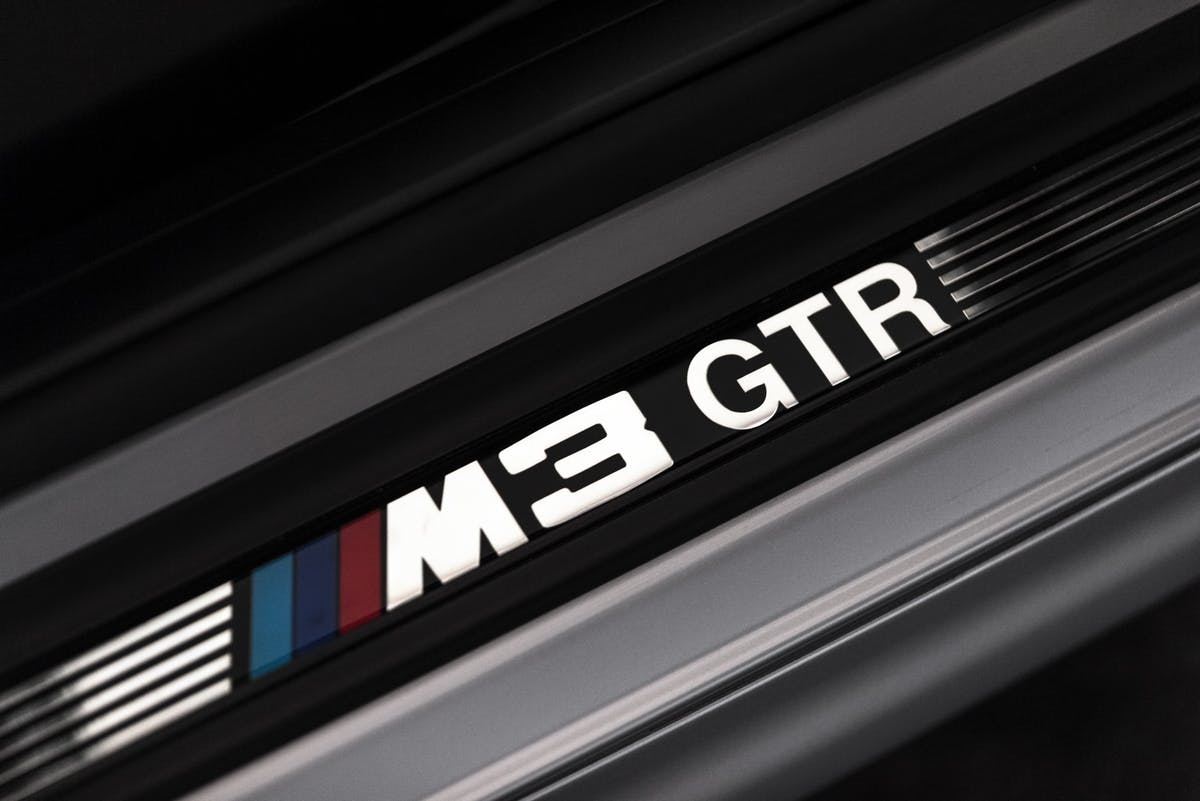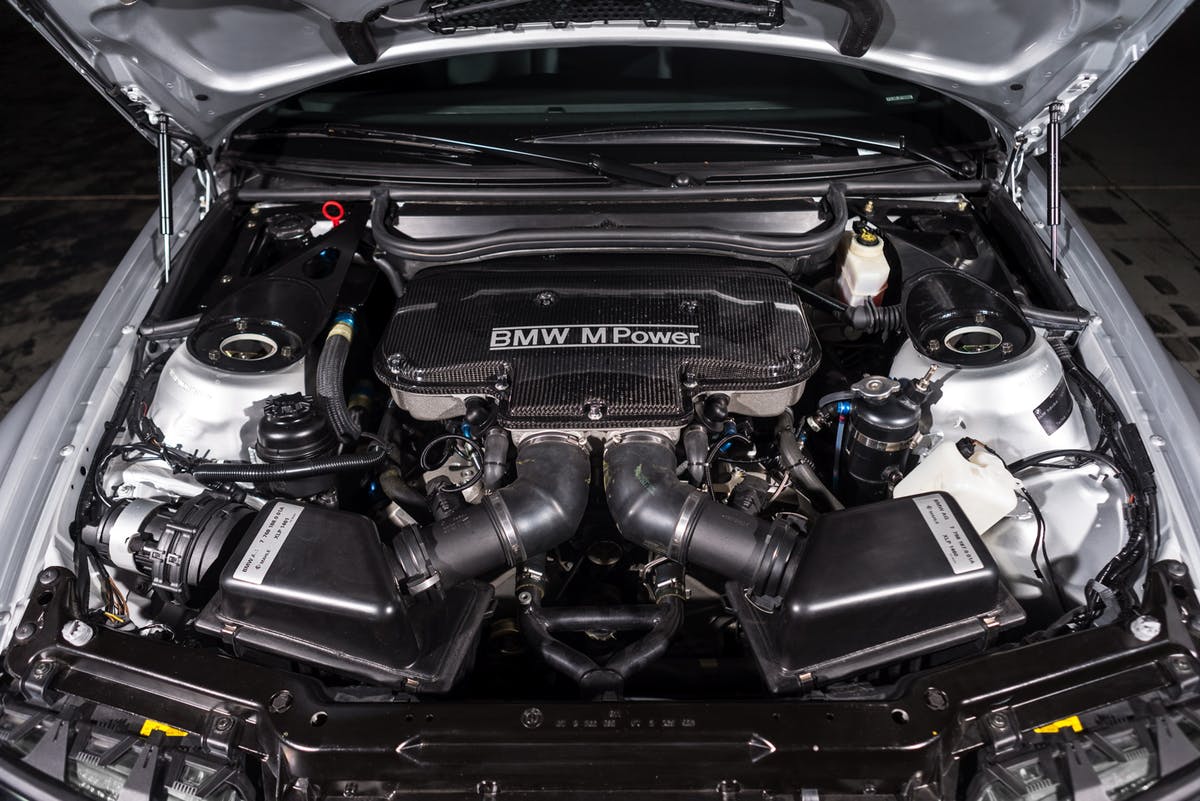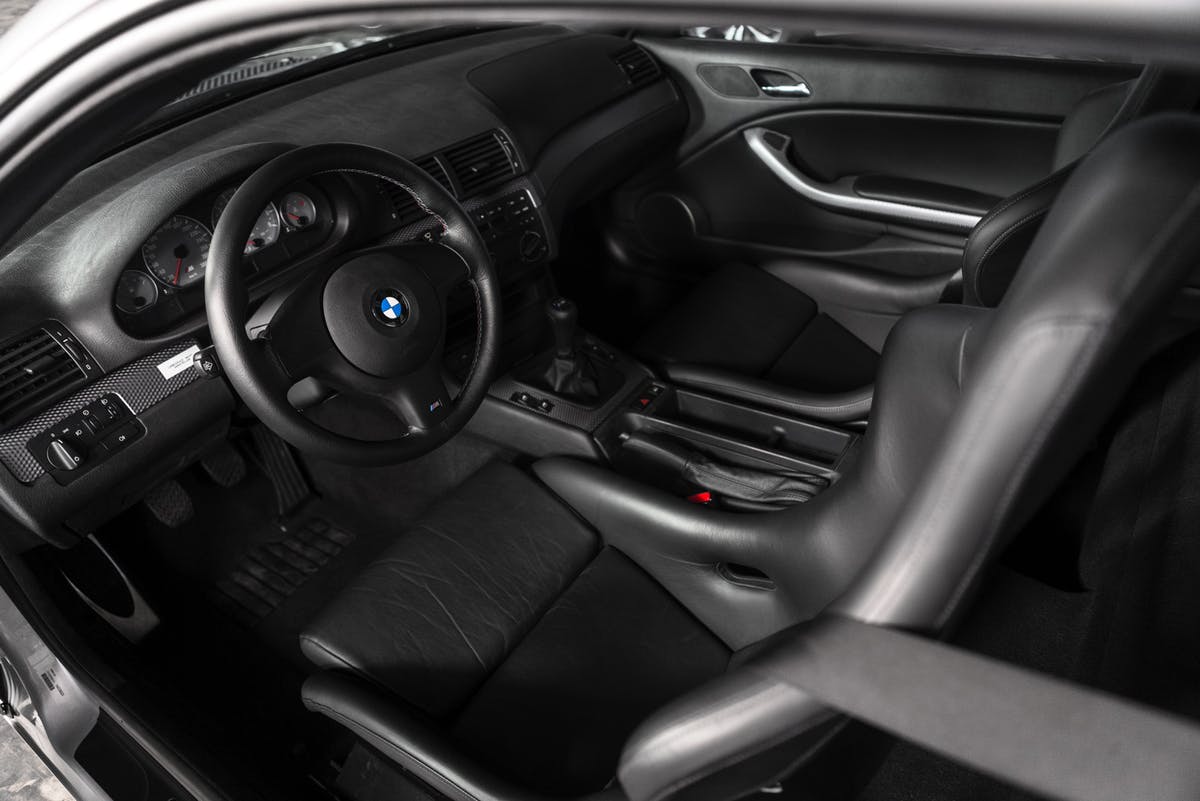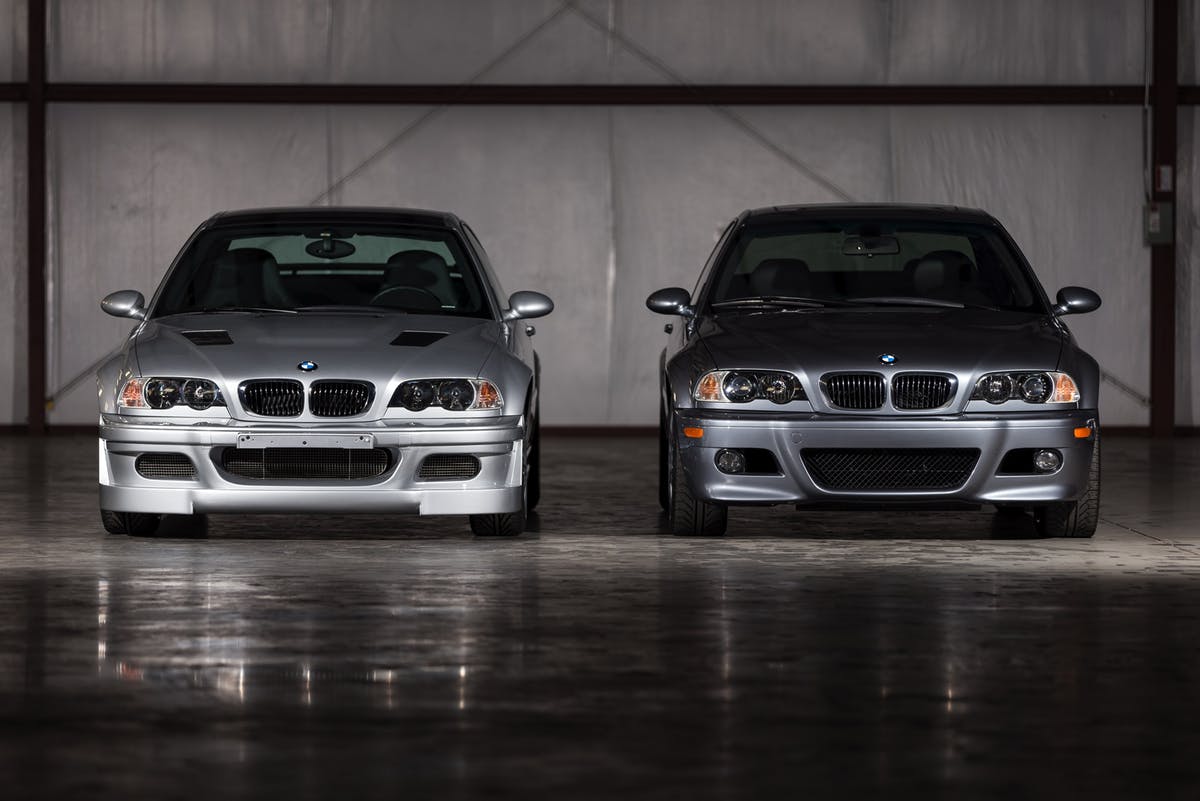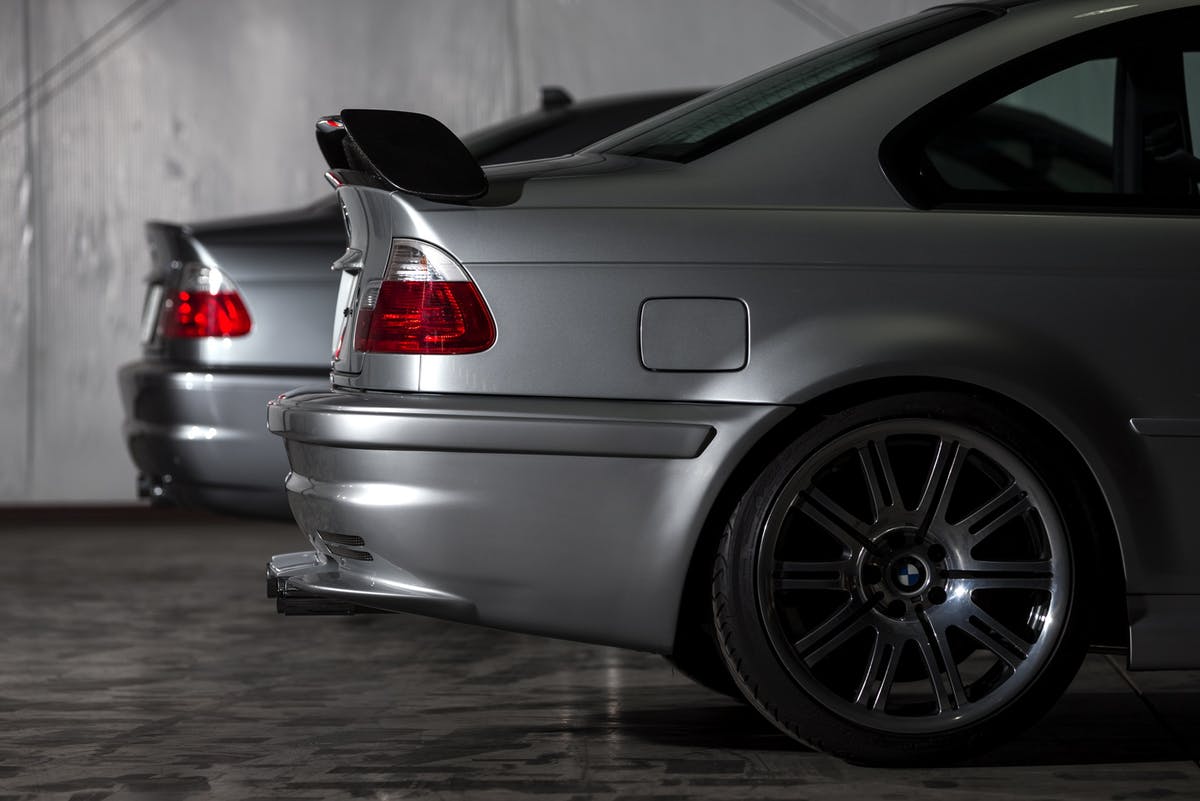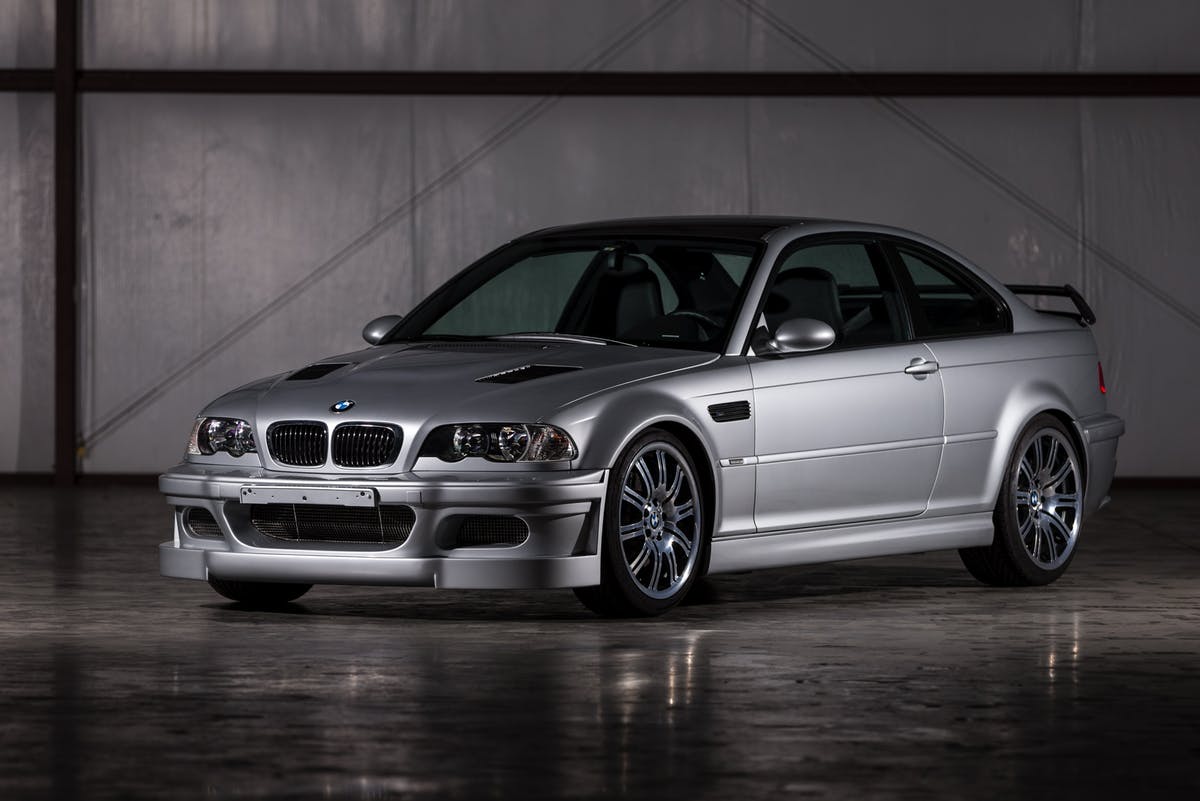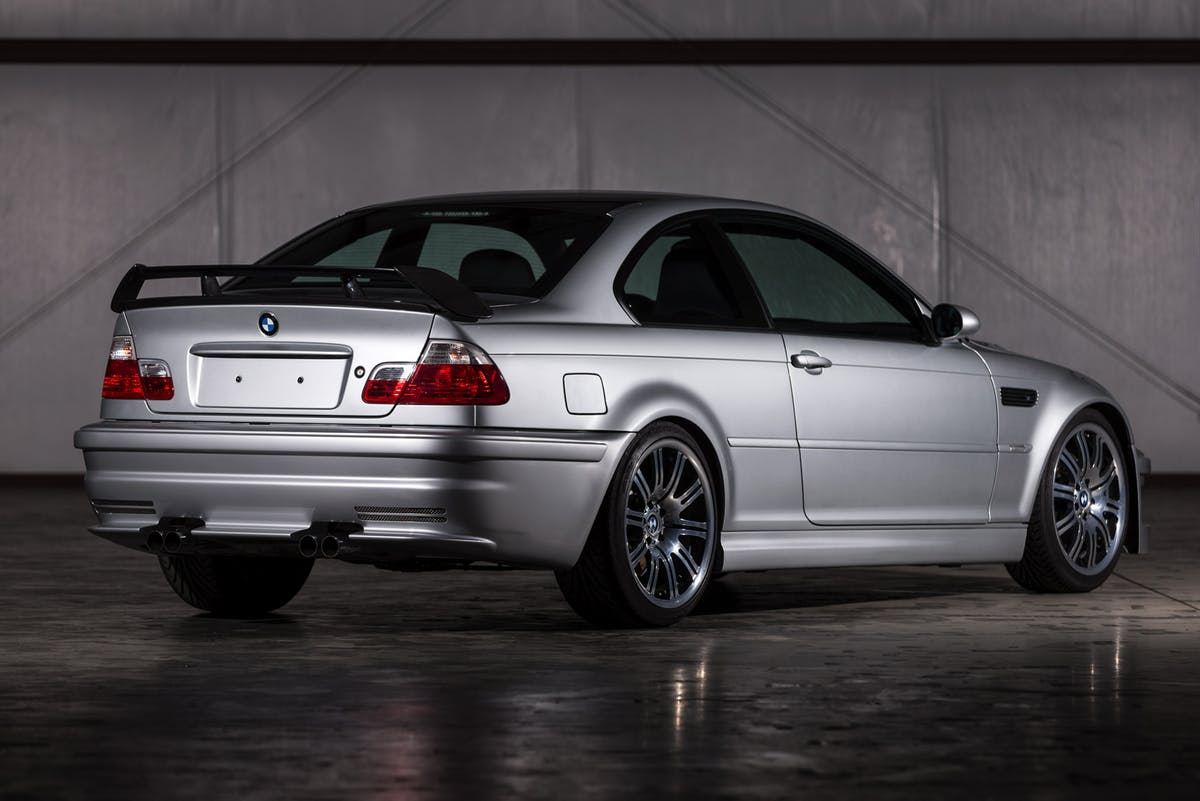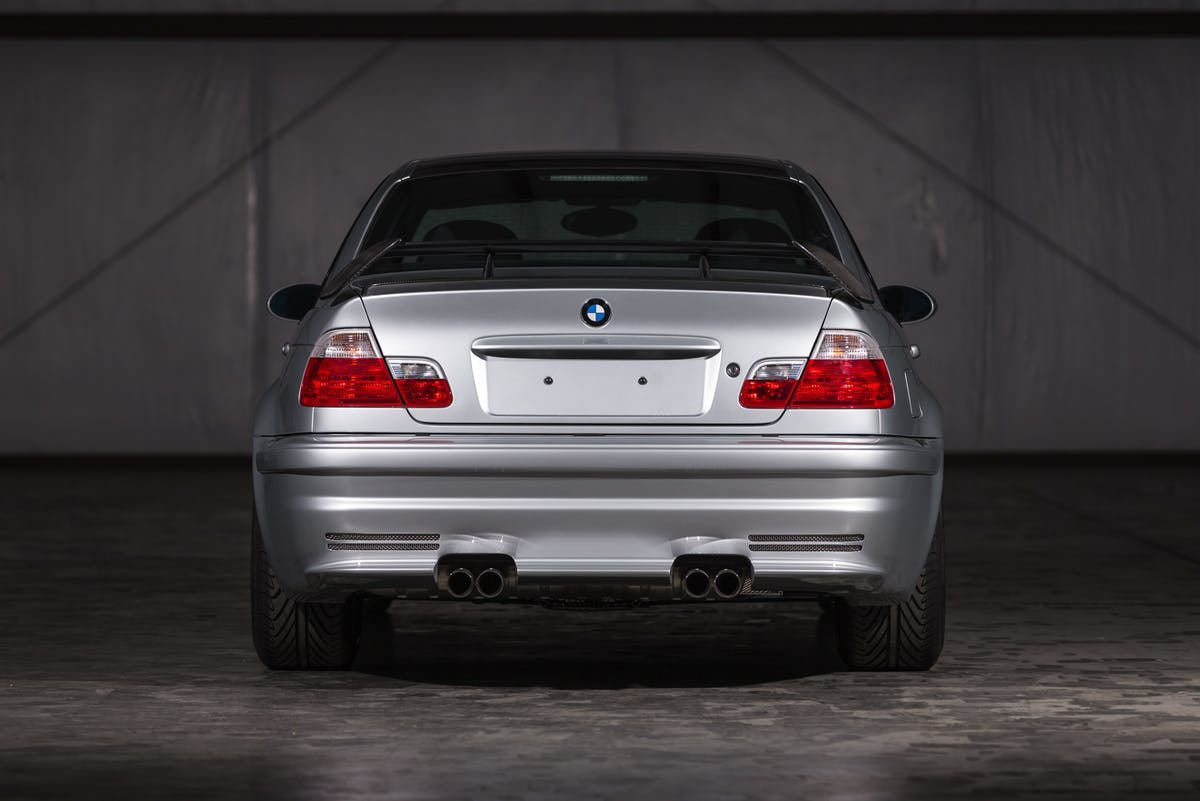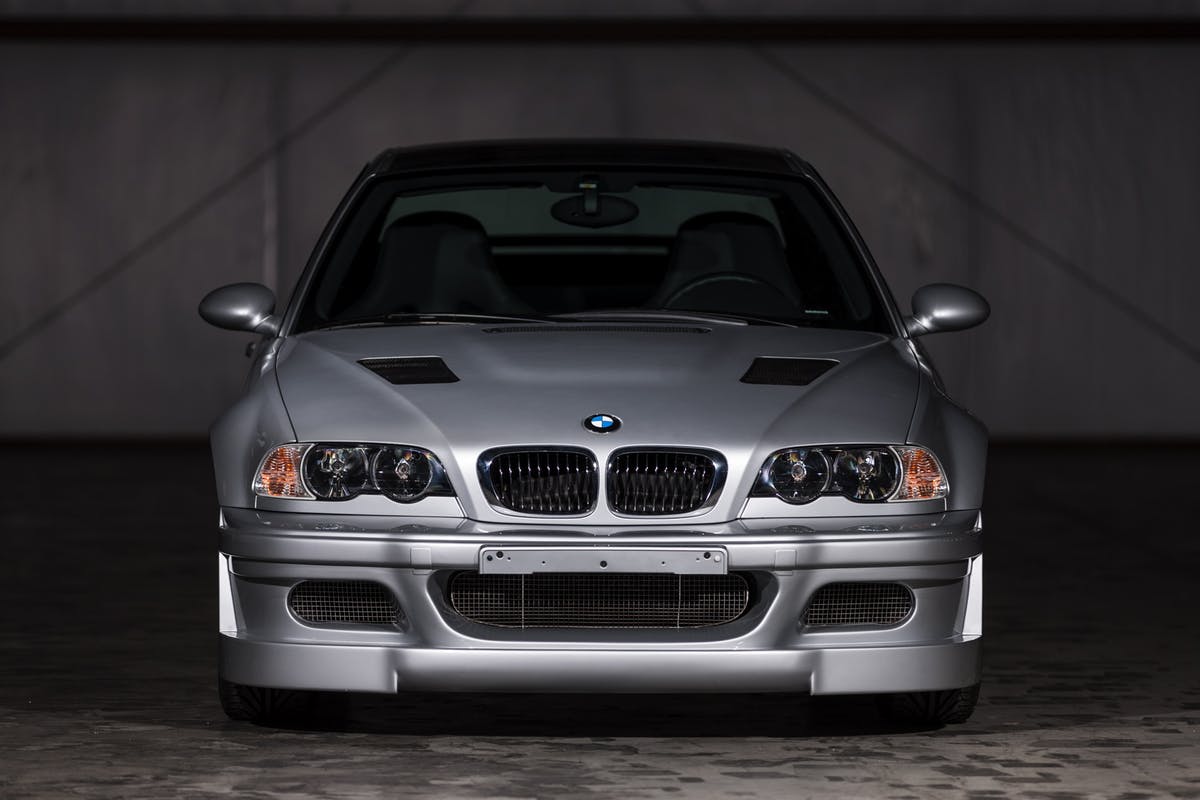2002 BMW M3 GTR Straßenversion
Built For Le Mans
Legal For The Road
Here For a Good Time
Engine & Performance
Chassis & Design
Pricing
Specification Sheet
Engine
Drivetrain
Performance Figures
Gallery & Video
Official Press Release
Built For Le Mans
The BMW M3 GTR Strassenversion can trace its roots back to competition racing in the American Le Mans Series (ALMS), where the race car it is based on – of the same name, minus the ‘Strassenversion’ – competed in the GT class.
The conception of the M3 GTR coincided with the introduction of the new of the new E46 generation of the BMW M3 in 2000. It would be assigned with the laser-focused mission of taking on the dominant Porsche 911, which had won 11 out of 12 races that same year in the GT class.
In 2001, the race-appropriated E46 M3 was ready to compete for the start of the 2001 season. While the M3 GTR certainly wasn’t the first M3 to be used by BMW for competition racing, it was remarkably unlike any of the previous iterations in the most notable respects.
BMW knew that if they were going to have any chance of a score over their rivals, they would need to bring some giant-killing arsenal to the game. Their most formidable weapon would come in the form of its engine, with a 4.0L V8 rather than the 3.2L straight-six used in the road-going version.
Simply reimagining the production car powerplant – which was perfectly capable in its own right – was not deemed adequate, so BMW created the 443-horsepower P60B40 engine for the GTR, which by all accounts was engineered with the sole purpose of being used in a race car – and therein lies the issue as to why we don’t see as many on the road as we would have liked.
The M3 GTR competed in a production-based racing class, however its engine wasn’t fitted in any production version of the M3 meaning it fell more into the prototype category than anything else. This meant that it would not satisfy homologation requirements to race in the ALMS GT series unless BMW produced and would go on to sell street legal versions of the car.
Legal For The Road
At the time, requirements by the ALMS governing bodies stated that a manufacturer must produce a minimum of 10 examples of the road-going version within 12 months of its debut.
BMW would satisfy these requirements – just barely – with a commitment to sell 10 street legal versions of the M3 GTR, thus giving birth to what BMW would dub the M3 GTR ‘Strassenversion’, or ‘Street Version’ when translated from German.
The most requisite detail that the Strassenversion would have to accept was the use of the same V8 engine that was used in the GTR, and by extension, no other production BMW. Rules would allow for it to be detuned to be more usable outside of the race track, though the engine would still end up producing roughly 380-horsepower in its tempered state.
Next to the regular M3, the M3 GTR Strassenversion was lighter, stiffer, and more purpose built for racing duties, borrowing many of its elements directly from the race version. Through its appearance, its augmentations were conspicuously on display with more aggressive bumpers, hood venting and a unique and larger rear wing.
If there was any reason not to believe that BMW was simply going along with the rulebooks, rather than having any true intent on selling the GTR to the masses, then its price should alleviate any doubts – €250,000 was the going rate, which is just about $400,000 USD today.
In spite of being a remarkable car on paper thanks to its link to the GTR race car, and for its distinction of being the first V8 BMW M3 which was road legal, there will always be that underlying notion that the Strassenversion was just a hastily assembled afterthought made at the behest of ALMS officials.
This is primarily because the car is really only a street car in the technical sense, than in the actual sense. The fact that none of the Strassenversions were ever sold – as was intended – also means that none of them were christened for the road. It is almost as if the car doesn’t exist – a car isn’t really road legal, if it’s never been on the road, right?
Nevertheless, the end product is a fascinating one.
Here For a Good Time (Not a Long time)
So with all of the homologation efforts now behind them, BMW Motorsport would go on to win seven out of ten of the races in the GT Series, and would record first and third place finishes with the BMW M3 GTR. BMW was elated. Porsche, not so much.
Porsche’s first order of business was to go back to the rulebook, and not the drawing board, in order to dislodge any prolonged success for their rivals. Spearheaded by Porsche, the rules defining what constitutes a ‘production car’ would be drastically reformed for the 2002 season.
Instead of the not-so-daunting 10 production car requirement for homologation the year before, at least 100 such cars would be the established benchmark going forward. The real kicker, particularly for BMW, was the additional requirement to build 1,000 engines.
With respect to the M3 GTR, the P60B40 by its nature, was extraordinarily expensive. As we know, BMW was already mulling over having to build 10, nevermind 1,000. Shortly after the rule changes, the Strassenversion was immediately discontinued, which also meant that its time competing in the ALMS was also over after just a single, but very successful season.
The M3 GTR continued to be legal to race in other competitions in Europe, and would compete in some alternatively sanctioned events such as Nürburgring 24 Hours from 2003 to 2005. Scoring successive victories in the 2004 and 2005 seasons, the M3 GTR would add more silverware on top of its previous ALMS success.
With that, the E46 M3 GTR extended the lineage of the remarkable M3 competition cars. The engine, which was the first of its kind in the M3, would go on to be the catalyst on which the V8 would return for the following generation of the E92 M3 road and competition cars, which would each go on to be successful, commercially and competitively.
The BMW M3 GTR Strassenversion made its public debut at the Road Atlanta paddock during the 2001 Petit Le Mans event. The car presented in the paddock at the Petit Le Mans and was only on display for approximately one hour, before BMW loaded it back onto a transporter to Munich. The GTR road cars have been cloaked in mystery and have been part of M3 lore ever since.
In the end, a total of just six cars were completed before the Strassenversion program was terminated. Three of those were used as engineering development cars, which would later be recycled for parts. The remaining three were production-level examples which have managed to survive to this day, as part of the BMW Group Classic collection.
Engine & Performance
BMW Motorsport engineers knew the straight-6 used in the production version would not adequately serve their 911-slaying purposes. Instead, they opted to design specially for the GTR competition car, a compact and lightweight V8 engine.
The all-aluminium power plant featured a 90° bank angle and had a displacement of 4.0L. Its overall design gave it some considerable advantages, such as an allowance to mount the radiator in a way that would optimize cooling. According to BMW, the engine – coded-named P60B40 – produced around 443-horsepower with restrictors in place and was mated to a 6-speed sequential transmission.
The Strassenversion – or road car – used the same P60B40 as seen in the race version, though it was slightly detuned to produce a more street-compliant 380-horsepower. In lieu of the competition specced sequential transmission was 6-speed manual gearbox with a racing derived twin-disc clutch and variable locking M differential.
Chassis & Design
Compared to the regular M3, the M3 GTR Strassenversion benefited from extensive weight reduction measures, including the use of CFRP body panels as seen on the GTR. In that same philosophy, the interior of the Strassenversion was also more spartan compared to the production version, though it was understandably plush compared to the all-out race car.
Inside, leather Recaro racing buckets were a distinctive feature along with the removal of the rear seats. M3 GTR badging and nameplates were also found throughout the cabin, further distinguishing it from the regular models.The BMW M3 GTR Strassenversion also featured an extensively stiffened chassis and a very sports-minded suspension setup derived from the race version. Redesigned front and rear fascias, a vented front hood and a specially made rear wing, optimized airflow, cooling and aerodynamics.
Pricing
The initial plan for the road to homologation, was to produce an allotment of 10 examples of the Strassenversion and price them at €250,000 each. In today’s figures, this is around $400,000 USD which is surely an exorbitant amount for an M3 road car – the regular M3 would be just over a tenth of the price.
As we know, this was all by design as BMW had zero intentions for the Strassenversion having any sort of commercial success. The simple fact of the matter, is that they just wanted to race in the ALMS. The Strassenversion was a means to an end, and amusingly, they didn’t sell a single unit afterall.
Only six Strassenversion cars ever made it to completion, before the program ended with the ALMS rule changes, of which BMW was unable to comply. Some of the remaining examples serve as the museum pieces; outside of that, the cars have rarely been seen ever since the shortest of cameos at their ‘unveiling’ at Road Atlanta in 2001. As far as unicorn cars go, this one defines the category to a T.
Specifications Sheet
Engine |
|
| Configuration | P60 90º V8 |
| Location | Front, longitudinally mounted |
| Construction | aluminium block and head |
| Displacement | 3,997 cc / 243.9 cu in |
| Bore / Stroke | 94.0 mm (3.7 in) / 72.0 mm (2.8 in) |
| Valvetrain | 4 valves / cylinder, DOHC |
| Fuel feed | Fuel Injection |
| Lubrication | Dry sump |
| Aspiration | Naturally Aspirated |
| Power | 380 bhp / 283 kW @ 7,000 rpm |
| Torque | 365 Nm / 269 ft lbs @ 5,000 rpm |
| BHP/Liter | 95 bhp / liter |
Drivetrain |
|
| Body | carbon fibre composite panels |
| Chassis | unitary steel |
| Front suspension | McPherson struts, adjustable dampers, anti-roll bar |
| Rear suspension | multi-link, adjustable dampers, anti-roll bar |
| Steering | rack-and-pinion, power assisted |
| Brakes (fr/r) | Brembo ventilated discs |
| Gearbox | 6 speed Manual |
| Clutch | Twin disc |
| Drive | Rear wheel drive |
Dimensions |
|
| Weight | 1,350 kilo / 2,976 lbs |
| Length / Width / Height | 4,617 mm (181.8 in) / 1,784 mm (70.2 in) / 1,345 mm (53 in) |
| Wheelbase / Track (fr/r) | 2,731 mm (107.5 in) / N/A / N/A |
Performance Figures |
|
| Power to weight | 0.28 bhp / kg |
Pictures & Video
Images
Videos
https://www.youtube.com/watch?v=z3i7xffjx38
Official Press Release
PressClub USA · Article
THE BMW M3 GTR HEADS FOR THE ROAD – THE TRULY ULTIMATE DRIVING MACHINE
25.09.2001 Press Release ARCHIVE
Munich. In February BMW will present a purebred sportscar for road use – the BMW M3 GTR powered by a V8 engine. This car, which is racing from victory to victory in the American Le Mans Series (ALMS), will be built by BMW M from January 2002. The flexible production facilities of BMW Individual permit the production of a small series. Road licensing is possible.
By using carbon fibre body parts and by completely foregoing any comfort equipment, the two-seater M3 GTR is a car for true purists. An empty weight of approx. 1350 kilograms has been achieved. The 4.0 litre V8 engine with a cylinder bank angle of 90 degrees resembles the race version featuring in excess of 450 hp. Due to the necessary adaptations regarding emissions and noise levels the road version still generates more than 258 kW (350 hp).
The M3 GTR road version is kept technically as close as possible to the racing version. Apart from the extremely light V8 engine this includes dry sump lubrication, a 6-speed gearbox, a two-disc sports clutch and the variable M differential lock.
For weight reduction purposes the roof, the rear spoiler as well as the front and rear aprons are made of carbon fibre reinforced plastic – just like in the race version. The extended front and rear apron as well as the rear spoiler optimise the aerodynamics of the M3 GTR. Additional cooling slits in the bonnet ensure the high-performance powerplants thermal well-being.
The BMW M3 GTR features an extremely lowered suspension and enormously sporty suspension settings. The compact V8 high-performance engine permits optimum weight distribution which, together with the 19-inch sports wheels, guarantee outstanding handling properties.
This level of exclusiveness also calls for a great deal of highly qualified manual workmanship giving the price of the BMW M3 GTR a new dimension. The price of approx. 250,000 euros reflects the extraordinary technology of this car.
National Motorsports M Cars, PRESS CONTACT. Thomas Plucinsky – BMW Group.
Legacy SC.net Article
In order to fulfill the homologation requirements, the M3 GTR road car was built in parallel with the racing program in the special vehicles department of the BMW Regensburg Plant. The road car used a slightly detuned version of the P60 rated at 380 horsepower at 7,000 rpm – complete with dry-sump lubrication and sharply canted radiator with hood venting. Power was transmitted through a racing style twin-disc clutch to a 6-speed manual gearbox and variable locking M differential.
The M3 GTR featured an extensively stiffened chassis and a very sporty suspension setup derived from the race version. The M3 GTR was dramatically lowered compared to the stock M3, additional bracing was fitted between the firewall and strut towers as well as between the rear shock towers. The extended and re-designed front and rear fascias and the rear wing optimized the aerodynamics of the M3 GTR by reducing lift.
The M3 GTR road car benefited from extensive weight reduction measures. The roof, rear spoiler, hood vents front and rear fascias were all constructed of carbon fiber reinforced plastic (CFRP) – just as on the race version. The interior of the GTR was also reworked with an eye on lightweight. Recaro leather covered racing seats were added, the rear seat was removed and special M3 GTR sill plates finished off the interior changes.
A total of six cars were completed before the program was terminated. Three of those were engineering development cars that were later recycled. Three production level examples were produced and these survive to this day as part of the BMW Group Classic collection. The road car debuted simultaneously at the Dubai importer and the Road Atlanta paddock during the 2001 Petit Le Mans event. The car presented in the paddock at the Petit Le Mans was only on display for approximately an hour before being loaded onto a transporter back to Munich. The GTR road cars have been cloaked in mystery and have been part of M3 lore ever since.
In Detail
| type | Limited Production Car |
| built at | Munich, Germany |
| production | 6 |
| price $ | $ 229,000 |
| engine | V8 |
| displacement | 3997 cc / 243.9 in³ |
| power | 335.6 kw / 450.0 bhp |
| specific output | 112.58 bhp per litre |
| bhp/weight | 333.33 bhp per tonne |
| curb weight | 1350 kg / 2976 lbs |
| transmission | 6-Speed |


